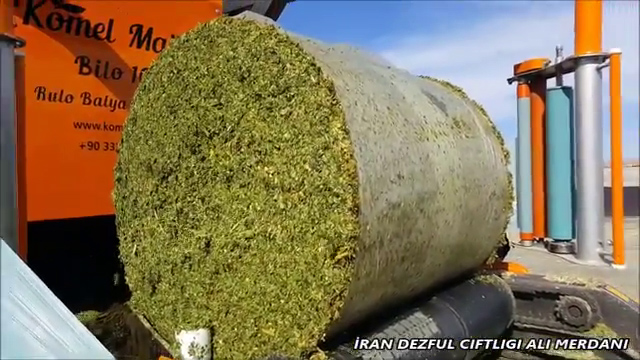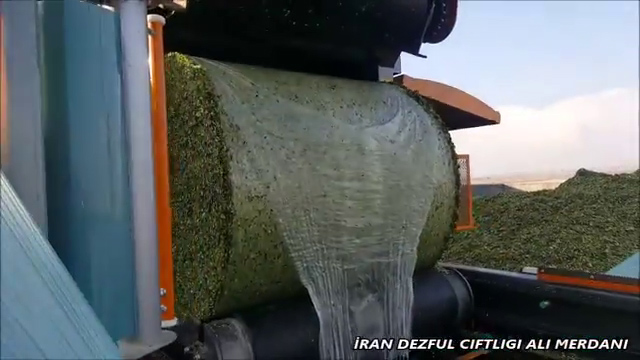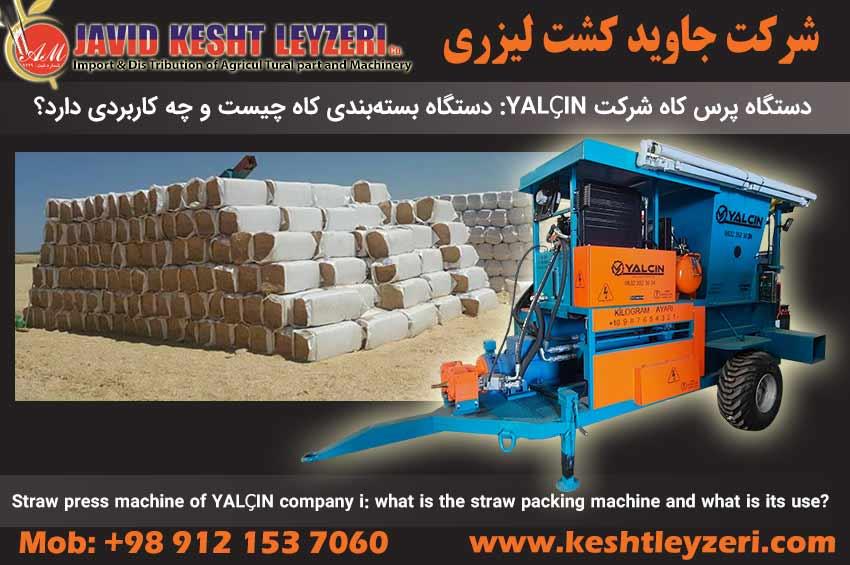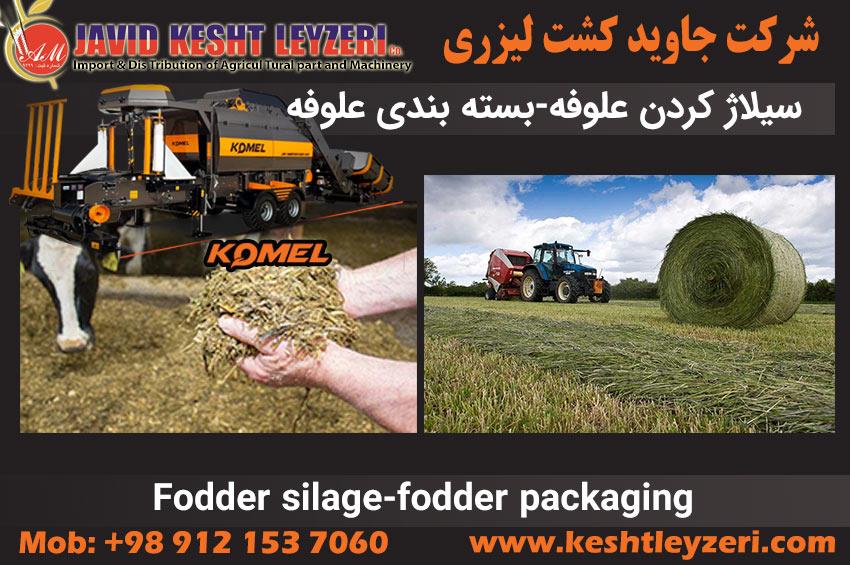
Fodder silage-fodder packaging
javid keshtleyzeri Co.ltd
Silage and packaging of some fodder feeds is one of the fodder preservation methods. On the one hand, moist foods spoil very quickly, and if they are left alone, fermentation takes place in them, as a result of which their nutrients are lost, and on the other hand, if they want to consume such foods, their digestion and absorption will undoubtedly produce food poisoning. will do.
In general, in order to prevent the decomposition of such food materials, they can be stored by drying in the open air, which is especially applicable to the grass of natural and artificial pastures, the waste of sugar factories, and the rest of alcohol and potato factories.
But the meaning of ensiling juicy fodder is to keep juicy food without drying, and this work can be done as a result of the fermentation process in a place that lacks air, in this way, on the one hand, the production of toxic substances should be prevented, and on the other hand, Avoid wasting and wasting food elements as much as possible.
During fermentation, organic acids are produced, which have the properties of disinfectants, and as a result, they prevent the loss of food.
A- With a small cost for ensiling fodder, you can provide the livestock with juicy and pleasant food at any time of the year.
2- Silage fodder is less harmful than normal fodder when consumed, and from the economic point of view, silage fodder is more economical.
3- Foodstuffs can be easily ensiled in any weather, while drying fodder is not possible in any weather, especially rainy weather.
4- By ensiling fodder, less space in the warehouse will be required to accommodate fodder.
5- It will be possible to prepare basic food in the farm and avoid buying additional fodder from abroad.
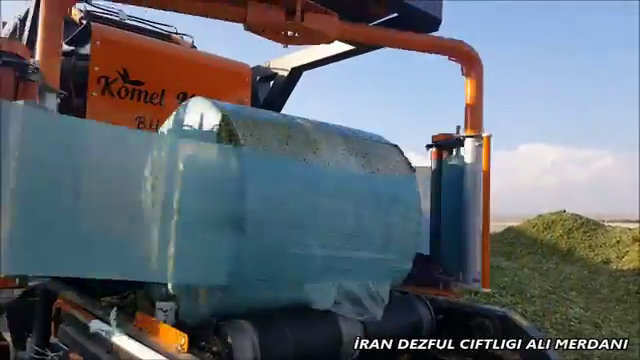
The condition of success in forage ensiling is that the food fermentation process takes place under the shelter of atmospheric air, and for this two actions must be performed in the silage, one is that the plant food materials are completely piled together as this action prevents the penetration of air inside the food mass, and the other Constant pressure is placed on the food because due to the fermentation inside the food mass, some of its volume decreases, and if there is no constant pressure on the food, some air will enter the food mass and as a result, it will spoil.
The act of putting pressure on the feedstuff depends on the type of feedstuff that is being ensiled and also on the method of ensiling the fodder. In the case of watery edible materials such as sugar beet pulp and the pulp of distilleries, which is almost semi-liquid, because it is more difficult for air to enter them, it is easier to squeeze them, on the contrary, in the case of green fodder such as alfalfa, clover, spruce, etc. The pressure on it must be very strong to prevent air from entering.
For this type of green fodder, which is difficult to pile on top of each other, it is better to crush them beforehand, the pressure that must be applied on such fodder materials in silage is about 500 kg per square meter on the free surface of the silage, and for this it depends on Local facilities of earth bags, stones, bricks and iron pieces are used.
Ensiling may be inside the pit or in the form of a mass in the open air. In the first case, the cross section of the pit that is dug should have a trapezoidal shape or so called the cross section of a pot, because in this case it becomes easier to compress the fodder by the walls of the silage and it makes the penetration of air more difficult and also The direction of the corners of the silage should be rounded so that the silage does not find any corners.
In order to make it easy to empty the silage, they usually don't give the silage much depth and mostly choose a depth of 1.60 meters. The width of the silage is usually between 4-3.5 meters, and the length of the silage depends on the amount of food that needs to be silaged.
After the food is frozen in the silage and the silage is filled properly, in order to compress the food and prevent air from entering the silage, it should be covered with a 50 cm layer of straw and loamy soil, and after the silage is pressed, which is gradually filled. It is possible that the upper surface of the silage should take a convex shape and this convexity should be slightly higher than the ground level so that the middle of the silage does not become hollow and does not cause rainwater to accumulate and penetrate into the silage.
As a result of fermentation inside the silage, the volume of the silage material gradually decreases and creates cracks on the surface of the silage, so care should be taken to close these cracks that are produced gradually with soil to prevent air from entering the silage.
In soil silos, as the silage body is made of soil, it is not smooth and slippery, so it is not possible to prevent the air from entering the silage as it should be, but to completely prevent the air from entering. The silage should be built with building materials so that its body is smooth and slippery and the entry of air is completely prevented and food waste is reduced. Such silos can be built inside the ground or on the ground.
In some areas, silage is made on the ground in the form of a cylinder, so that this type of silage is usually at least 4 meters high and 9 meters high.
To fill this silage, food is poured into the silage from the upper opening and by mechanical means, depending on whether the food that is poured into the silage is living or dead.
In the first case, if the food is alive, such as green fodder, its breathing process continues for a short time under the shelter of light, that is, it uses the oxygen that is in the silage mass and produces water and carbon dioxide (carbon dioxide) due to oxidation, and the temperature of the silage It goes up and gradually all the available oxygen is consumed until the life of plant cells stops.
However, the fermentation process continues due to the presence of microscopic organisms inside the silage, which means that as a result of ensiling the forage, bacteria begin to multiply inside the silage, so that after two days, each gram of ensiled forage juice contains one hundred million bacteria. They act on fodder sugar and after alcoholic fermentation, lactic fermentation is established in silage, as a result of which lactic acid is produced.
This same lactic acid prevents the creation of other fermentations, which means that the production of organic acids inside the silage prevents the growth and proliferation of unfavorable bacteria and prevents fodder from spoiling and rotting.
When the acidity of the silage reaches a certain level, that is, the pH of the environment reaches 3-4, the fermentation process stops, and if air penetrates into it, the silage is preserved for a long time, but if air enters from the top or its walls, it causes mold and rot. It becomes silage and will cause damage.
Due to the existence of lactic steers, which are non-aerobic and require an oxygen-free environment, as well as the elimination of acetic and butyric steers, which are aerobic, the importance of removing air from the silage and preventing the entry of air from the outside becomes completely clear.
Silages in which lactic fermentation and lactic acid are produced are called sweet silage and silos in which butyric fermentation is done are called sour silage.
From what has been said, it is concluded that in the case of silaging fodder, the ground for lactic fermentation in the silage should be provided first and mold production should be prevented.
In the case of dead food materials such as sugar beet dregs or the remains of distilleries that have been heated for a long time and most of the lactic acid bacteria have been killed and destroyed, the spores of the butyric acid bacteria replace it. At the time of ensiling forage, some lactic acid culture is added to the silage material, which is called lacto-pulp.
These commands, which are given manually, prevent butyric fermentation and even cause lactic fermentation with sugar beet pomace.
In general, the fermentation process in silage lasts from 6 weeks to two months, and after this period, the silage material can be used for animal feed, and because the silage material spoils very quickly in the open air, it should be used according to the amount and what is needed for the animal ration. is taken out of the silage daily.
Also, care should be taken to cut and harvest the silage material in such a way that the surface of the silage is not disturbed and air does not enter it.
The silage material can be of any type of plant, especially for grass-eating animals such as cows and sheep, in whose stomach fermentation usually takes place.
As already seen, because the silage material will soon rot in the air, so health precautions should be observed when using it, which means that if some silage material remains in the animal manger, it will emit an unpleasant smell in the stable due to fermentation, which is not suitable for the health of the animal. .
It is definitely possible to make high-quality fodder silage by using fodder packaging and silage machines and devices. In the following, you can view the fodder packaging machines by clicking on the image and the following link:

